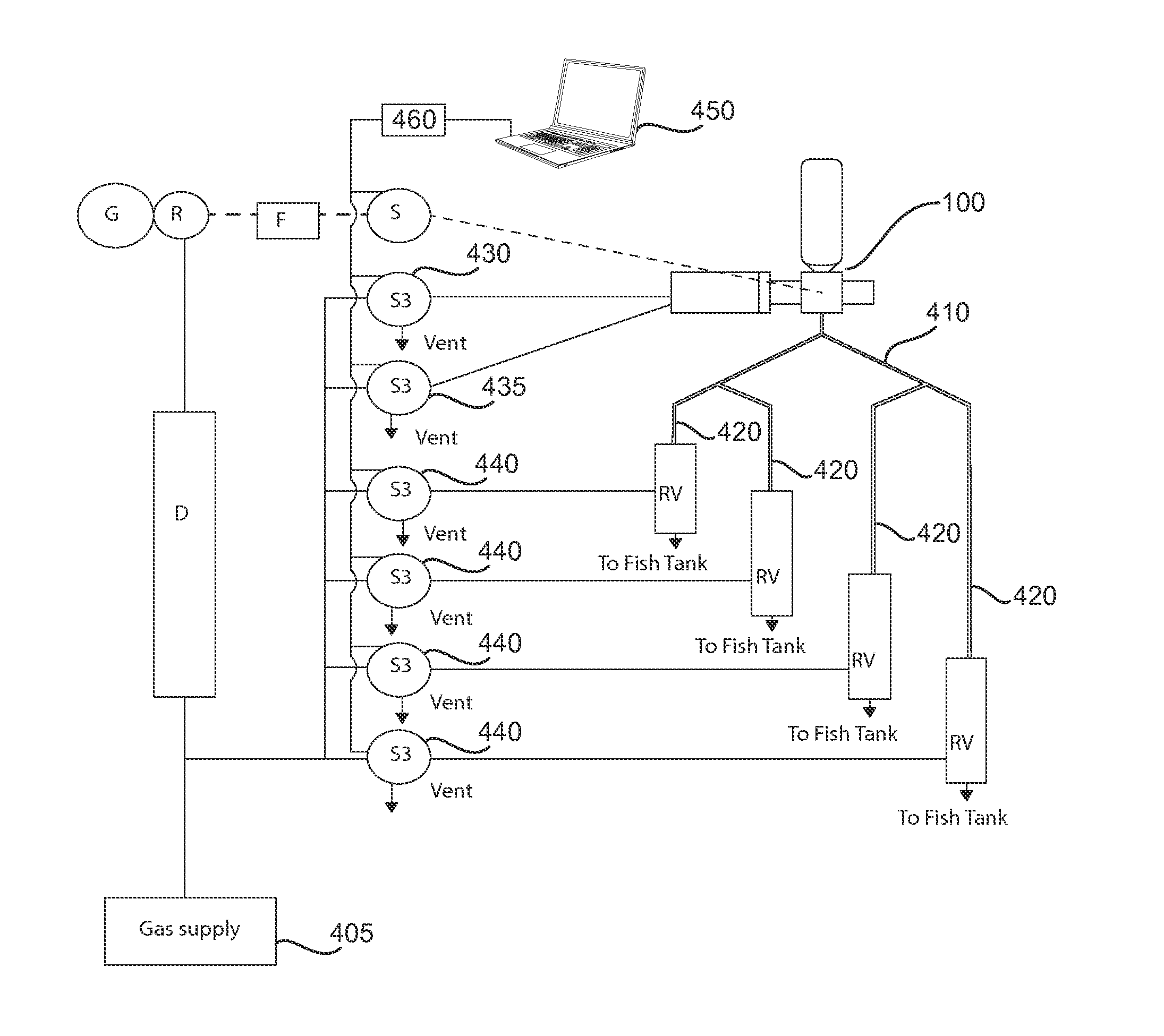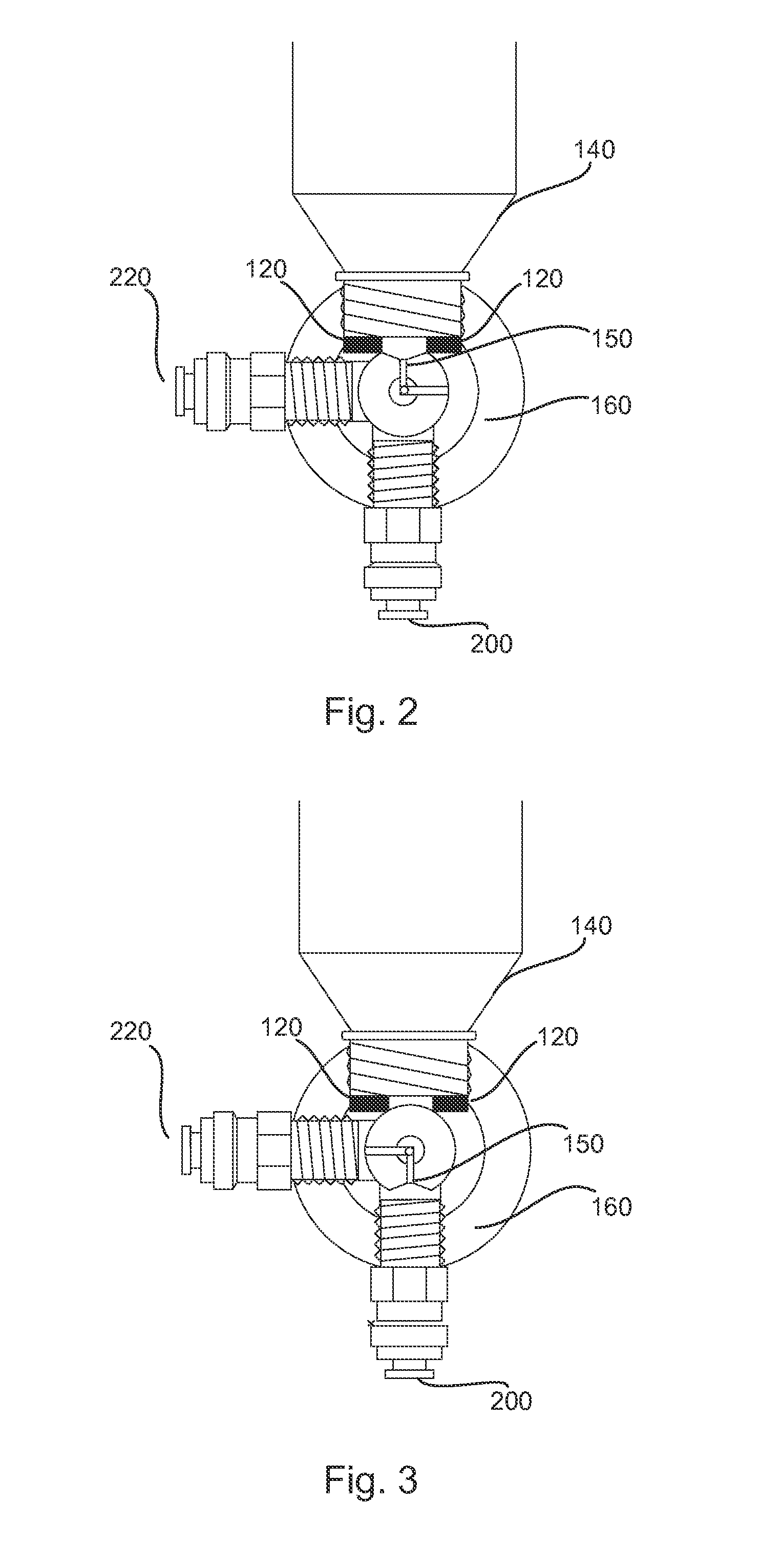Adjustable dosage microparticulate feeder for larval and juvenile fishes
a microparticulate and feeder technology, applied in the field of fish feeders, can solve the problems of reducing the quality of fish feed, reducing the number of components, reducing the efficiency of fish feed, and reducing the number of fish feed, etc., to achieve the effect of reducing the number of components, reducing the cost and complexity of the device, and avoiding moisture and caking
- Summary
- Abstract
- Description
- Claims
- Application Information
AI Technical Summary
Benefits of technology
Problems solved by technology
Method used
Image
Examples
Embodiment Construction
[0047]FIG. 1 is an elevation view of dispenser components of microparticulate feeder. Note that the depicted design uses ‘O’ rings 190 as both seals and bearings. In an alternative embodiment, captive ball bearings and cup seals may be used to ensure long-term performance over a heavy-duty cycle.
[0048]Referring to FIG. 1, the feeder of the present invention uses a manifold delivery system (as shown in FIG. 4) attached to a central dispensing unit 100. Thus, one feeder can feed several fish tanks. The feeder 100 dispenses a discrete volume of feed 105, determined by a chamber 150 in a rotating component 170, rotating within housing 160. The feed 105 is loaded into the chamber 150 by gravity from a sealed hopper 140 above the chamber 150. A small vibrator 130, attached to the hopper 140, aids in settling the feed into the chamber. Vibrator 140 may comprise a cell phone type vibrator commonly known in the cell phone art. The chamber 150 includes an L-shaped airway radially situated thr...
PUM
 Login to View More
Login to View More Abstract
Description
Claims
Application Information
 Login to View More
Login to View More - R&D
- Intellectual Property
- Life Sciences
- Materials
- Tech Scout
- Unparalleled Data Quality
- Higher Quality Content
- 60% Fewer Hallucinations
Browse by: Latest US Patents, China's latest patents, Technical Efficacy Thesaurus, Application Domain, Technology Topic, Popular Technical Reports.
© 2025 PatSnap. All rights reserved.Legal|Privacy policy|Modern Slavery Act Transparency Statement|Sitemap|About US| Contact US: help@patsnap.com



